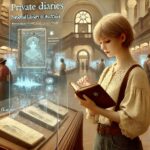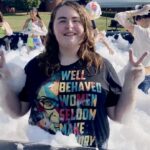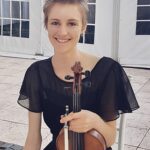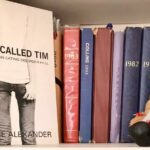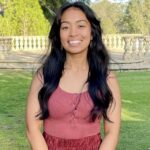On all calculations, Mary’s story about a community art project will endure
On all calculations, Mary’s story about a community art project will endure
Drum roll for Mary Randall, completing a PhD based on Gippsland.
By Mary Randall
I like calculating. I find it relaxes me when I’m lying in bed in the early hours of the morning. So, this morning I found myself calculating where I’d spent the years of my life. It turned out that I’d spent 27 years in Gippsland, 23 years in Melbourne, seven years in Western Victoria and five years in Canberra. But then there are all those months of holidays when I have been overseas. Eight months travelling in Asia (more than five trips), two months in Africa, two months in the United Kingdom/Europe, two months in New Zealand and two months in North America. This adds up to more than a year of my life outside Australia. I just need to go to South America to say I have visited each continent.
Yet, at the moment, I’m staying put to finish writing my PhD. My research is based in Gippsland, giving back to the place that has succoured me the longest. The place where I have many friends, where music fills the air and performing on drums has become part of my identity. Now I’m learning to talk about academic things, a different kind of performance. I am learning to write academically, which is a challenge. But writing is part of my love due to my experiences with Women in Community, where it evolved over time and gave me confidence to attempt new things.
Originally, I came across this art and community group when the State Government had provided a grant of $10,000 in each local government area to encourage women to advance their skills and to develop projects that represented them in their shires. I live in a small town in the Mountain Rivers area, where we overlook Mt Erica. The nearest women’s group was in Latrobe Valley, where I met more than 100 women at a workshop designed to explain the grant and seed the idea of projects. The group leaders also organised workshops for skill development in business and communication, and we attended.
Eventually, the group chose to write and illustrate a book, giving voice to the people of this part of Gippsland and how they came to be living there. We gathered stories which people wrote or told us. Michelle Tisdale emerged as a natural leader to coordinate the project, and others agreed to spend time on the committee. This project was a book entitled Tucker ‘n’ Tales: Stories and Recipes from Latrobe Valley & Mountain Rivers. My role in the project was to write my story about Rawson, as well as to interview and write up 10 stories from Walhalla, Erica, Moondarra, Morwell and Rawson. This was a lovely time, meeting residents in my local community that I did not know well and discovering gems about their history in the area.
I met a beautiful Indigenous lady in the Latrobe Valley and wrote down her tale, while another lady told me of her work with people with a disability. Once the stories were collected and we had photographs and artworks to illustrate the book, we had a weekend where we did a lot of editing. After many hours of work and with the assistance of a professional editor, we got to the publishing stage and chose a local printing firm who were very supportive. Finally, we produced 500 copies of the book and then we set about managing the distribution and collecting revenue. The business side of the operation was almost complete. Meanwhile, the women had learned about dealing with the media and setting up websites. And then we had the book launch in 2005! It was wonderful to see the project through to fruition, and it gave me a sense of fulfilment to have participated in a team that produced wonderful stories and recipes to be preserved for the future.
Before long, it was 2006 and the wildfires were upon us. Gippsland was ablaze and firefighters were brought in from all over Victoria as well as interstate and overseas. We were asked to document some of the stories of people affected by the fires and fire crews who attended. Thus, arrived our next book, 69 Days of Fire: A Gippsland Community Perspective. My contribution was a story entitled Preparing to Leave Rawson. My husband wrote a story called Strong Team Bond. I was involved in the editing of stories and photographs. It was a helpful way to document the stories and liaise with those affected. We got extra funding, managed the editing ourselves, and this time produced 2000 books. These books were distributed all over Gippsland, and those unsold were given to the CFA. Some of the women were also involved in learning how to create mosaics and produced a beautiful piece for the new fire station at Traralgon.
I had many contacts in the area of autism due to my job and to having a son, Matthew, who experiences autism. I had also been coordinator of the Gippsland Autism Support group for four years. Hence, it made sense to produce a book of stories of people and families with autism, as a book of stories was something I had wished for when my son was young. Learning from others in similar situations can often assist greatly. The women suggested that I coordinate this book, which was entitled Achieving with Autism: Stories from Families. Our initial title was improved by an anonymous person with autism who got in touch with us via our email. Over the course of several years, we collected stories from about 14 people, mostly written by family. We were very privileged to have Jenny Ray contribute her own story. It was such a pleasure hearing wonderful insights from family life and seeing the variety of tales that were told with love. One of our members photographed blossoms for the front cover, thinking of these young people blossoming. I enjoyed collaborating with the graphic artist who worked for the printer. We launched the book in Traralgon in 2012 and the Women in Community wore beautiful blue scarves.
The Women in Community group also sponsored some projects overseas. We sent a crate of goods to communities in West Africa and assisted families to rebuild after the devastating storms in Fiji. I was privileged to self-fund a trip to West Africa to meet some of the families receiving the goods and to provide mosquito nets for pregnant women in malaria infested areas. It helped me appreciate the good fortune we have in Australia.
Living in a rural area can mean less opportunities for paid work and education, so it is important that women get chances to participate in and contribute to the local community, to meet like-minded friends and to produce works of art and scholarship. Our group wound up in 2018 with many of the group members having other commitments to work, study and family. We donated our remaining funds to Soroptimists and some to Boomalele community music group. I think the investment by the Victorian State Government in 2004 was well-rewarded for them, for our communities and for us women!
About Mary
I was born in Melbourne and lived there most of my childhood. I ventured to Canberra in 1983 to study at Australian National University (ANU) and met my husband Peter. We have four adult children and live in Gippsland. I am completing a PhD at Federation University, Churchill.
